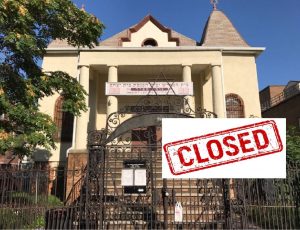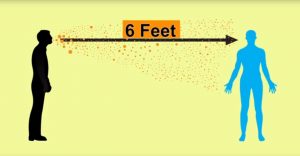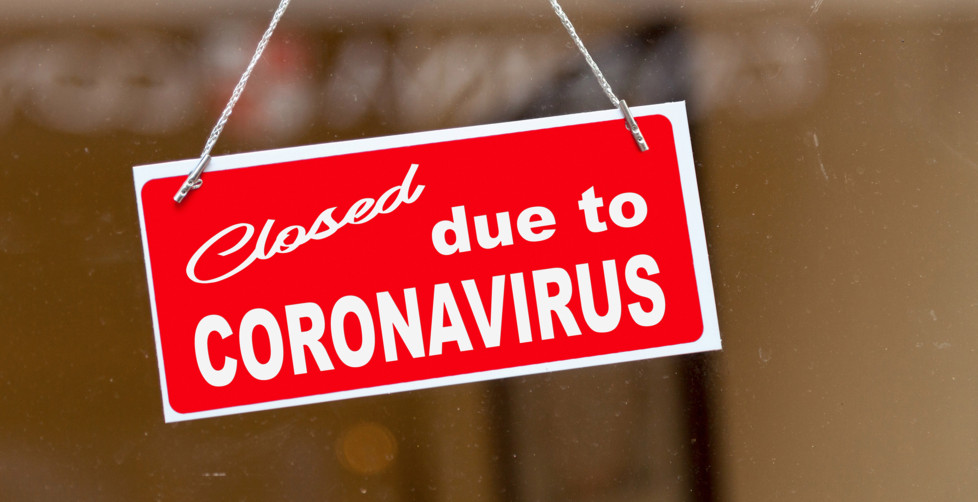We begin with extended mazel tov wishes to Chani and Jay Kestenbaum upon the wedding this past Sunday of their youngest and last of their children, Joseph (Yosef) who married Becca Rauch in a very beautiful, moving, and very memorable chuppah and wedding. We’ve all been to dozens –mistama hundreds of weddings and few stick out over the years. Ober, no one will ever forget this beautiful wedding held during trying and challenging times. In the words of rabbi Feiner, why wait?! The bottom line: the RBSO runs the world; seemingly Yosef and his now wife Becca chap all this and adjusted with great simcha to the facts on the ground. May Yosef and Becca bring much nachas to their respective families for many many decades. Mazel tov to the extended Kestenbaum and Rauch families.
Another big mazel tov to Faye Stern, on the wedding this past Monday of her beautiful daughter Shenya to Shua Dany, son of Rachel and Chaim Dany. A Mazel tov to the extended Stern, Hauptman and Dany families on yet another memorable wedding held during challenging times. The bottom line: they got married and may Shenya and Shua enjoy each other and provide nachas to their respective families for decades.
Raboyseyee and Ladies:
Coronavirus: The New Chinese Takeout?
According to many (on the internet of course) and also according to GrubHub, the online and mobile food ordering service, who analyzed a year’s worth of ordering data from its 30,000 participating restaurants in more than 800 cities serving 172,000 take-out orders a day to their 4.57 million active diners, the ten most popular Chinese dishes in America are:
- General Tso’s Chicken (also the 4th most popular dish in general on GrubHub)
- Crab Rangoon
- Egg Roll
- Sesame Chicken
- Wonton Soup
- Fried Rice
- Sweet and Sour Chicken
- Orange Chicken
- Hot and Sour Soup
- Pot Sticker
 All that being said, the number one item being Googled, talked and written about –with good reason- is coronavirus. There is avada a machloikes (disagreement) between President Trump (zul er zeyn gizunt) and the Chinese people as to its origin, ober the bottom line is azoy: if it came over from China, so it shall be forever known, and in the words of chaver Heshie Schterz, men furt veyter (let’s move on) and stay healthy!
All that being said, the number one item being Googled, talked and written about –with good reason- is coronavirus. There is avada a machloikes (disagreement) between President Trump (zul er zeyn gizunt) and the Chinese people as to its origin, ober the bottom line is azoy: if it came over from China, so it shall be forever known, and in the words of chaver Heshie Schterz, men furt veyter (let’s move on) and stay healthy!
Did the RBSO warn us of corona virus back in the year 2248? Did He mamish spell it out for us in plain Hebrew lettering? Did Moishe call for a quarantine? Did he self-quarantine? We shall address these questions below as we get ready to mark another shabbis without shul, without minyan, laining, without attending at least one shul or privately sponsored Kiddush, and efsher above all, without coming home armed with the gossip of the week typically heard in shul. Yikes! Grada this topic deserves a sociological study of its own: when shuls around the neighborhoods are open offering various minyonim, learning, programs, and much more, people –some- take them for granted. They come late, come just for the socializing and the kiddish, yada yada. Ober with shul closed, everyone is upset; what’s pshat no shul? It’s a himmelgishrey! The bottom line: we’re in lockdown status and shuls too, like stores, factories, and myriad other industries, are closed. Who runs the world? Only the RBSO!
 And with the world in turmoil – what more needs to be said- the Oisvorfer was deep in thought on what to write this week. As you all know Parshas Vayakhale and Pikudai are kimat an exact replica –a repeat mamish- of parshas Terumah and Tetzaveh. They are technical, monochromatic parshas which essentially repeat what we have already heard. Ober we have previously written on this topic and avada mentioned that even Rashi who weighs in on kimat every posik in every parsha, has so little to say on Vayakhale and Pikuday. Why? Because it’s all been asked and answered back in Teruma and Tetzevah. And if it wasn’t asked, it was better explained; Rashi is the best. What to do?
And with the world in turmoil – what more needs to be said- the Oisvorfer was deep in thought on what to write this week. As you all know Parshas Vayakhale and Pikudai are kimat an exact replica –a repeat mamish- of parshas Terumah and Tetzaveh. They are technical, monochromatic parshas which essentially repeat what we have already heard. Ober we have previously written on this topic and avada mentioned that even Rashi who weighs in on kimat every posik in every parsha, has so little to say on Vayakhale and Pikuday. Why? Because it’s all been asked and answered back in Teruma and Tetzevah. And if it wasn’t asked, it was better explained; Rashi is the best. What to do?
Nu, with the world in suspended animation, with people walking around like zombies knowing not what to do with themselves as their routines have been broken, what was the heylige Oisvorfer to write about? Typically when the Ois is topic-less by Monday, he begins reviewing the parsha in reverse order; he begins with the last posik and makes his way back to the beginning hoping to come across a few words, a verse, or a topic that scream out for further elucidation. Ober for reasons unknown, efsher the anesthesia from surgery last Thursday and the pain still wreaking havoc on his brain cells, the routine was reversed and he began at the very beginning with the very first posik. And guess what? That’s where he got stuck. The RBSO mamish sent a lightning bolt: stop right here, look here! Again the RBSO came to the rescue as He will zicher with this current magayfo. Speaking of magayfo, a word found in the heylige Toirah that appears in connection with the RBSO’s wrath and people dying as a result, while conversing earlier this week with Rabbi Hain, we were discussing the differences between the word plague as in the ten makos the RBSO visited upon Paroy, and the word magayfo. The bottom line: both are not good, though it’s les-man- dipolig (few would argue) that magayfo is worse, it involves many deaths. Veyter.
On Monday past the phone rang. On the other end was a gentleman the Ois has known for over 55 years, he called to share a thought form his brother Mendy Schwartz now of Miami (back then from Boro Park). He asked that I not repeat his name, and I won’t. Listen carefully the first time. The gentleman who called is Shya Hersh Schwartz, otherwise known for operating congregation Beis-Ment for over thirty years. So happens –mamish bashert min hashomayim- that the thought his brother has shared was also from the very first posik of the parsha and between his thought and what the Oisvorfer had intended to cover, it goes like this.
As Parshas Ki Sisa was coming to an end, the RBSO dedicated the last six pisukim to the glow on Moishe’s face after arriving back with the second set of the Aseres Hadibrois (Ten Commandment). Moishe was, as discussed at length last week, radiant. Concerned that the Yiddin were afraid to look at him and how this might impact his ability to teach and interact with them, the heylige Toirah tells us that at times -at least- Moishe’s face was covered with a mask. In fact the last six pisukim were all about the events leading to his radiance and how he wore a protective mask. Says the heylige Toirah (Shmois 34:40-last week), azoy: “When Aharoin and all the Israelites saw that the skin of Moishe’s face was shining with a brilliant light they were afraid to come close to him.” And taka, how effective can a leader be when his followers are afraid to come near him?
We have all received dozens of memes –many quite humorous- regarding the coronavirus, and taka we could use a good laugh during these turbulent times. As it turns out, and as the Oisvorfer has told you over and again, there is nothing new in this world; everything can be traced back to the heylige Toirah. And if not there, you can find what you are looking for in the heylige Gemora, and or in the writings of the myriad exegetes who proffered their thoughts on nearly every topic and spoken word. To chap this pshat, lets’ go back and read the very last posik of last week’s parsha. Says the heylige Toirah azoy:
| 35. Then the children of Israel would see Moishe’s face, that the skin of Moishe’s face had become radiant, and [then] Moishe would replace the covering over his face until he would come [again] to speak with Him. | לה וְרָא֤וּ בְנֵי־יִשְׂרָאֵל֙ אֶת־פְּנֵ֣י משֶׁ֔ה כִּ֣י קָרַ֔ן ע֖וֹר פְּנֵ֣י משֶׁ֑ה וְהֵשִׁ֨יב משֶׁ֤ה אֶת־הַמַּסְוֶה֙ עַל־פָּנָ֔יו עַד־בֹּא֖וֹ לְדַבֵּ֥ר אִתּֽוֹ: |
For readers with some background, or at least those who can read in Hebrew, let’s begin here. Look (not so) carefully at the words קָרַ֔ן ע֖וֹר
Attach them, hyphenate them and what do you see? Do they epes not read corona? Grada they do! They read ko-ro-ner, ober it’s close enough. And is there not talk of mask-wearing associated with this Koren-or? There is! The entire world is looking for masks. Earlier in the week, also on Monday, chaver Mark called from Los Angeles and put me on the phone with a gentleman who claimed to have 10,000,000 masks available for sale. By late Wednesday, the number had shrunken down to 3,000,000. Is this real? Ver veyst? In any event, with mask talk, Parshas Ki Si Sa came to an end. And now let’s read the very first posik of Vayakhale and let’s also see the Rashi.
| Moishe gathered the whole community of the children of Israel to assemble, and he said to them: “These are the things that the Lord commanded to make. | א וַיַּקְהֵ֣ל משֶׁ֗ה אֶת־כָּל־עֲדַ֛ת בְּנֵ֥י יִשְׂרָאֵ֖ל וַיֹּ֣אמֶר אֲלֵהֶ֑ם אֵ֚לֶּה הַדְּבָרִ֔ים אֲשֶׁר־צִוָּ֥ה יְהֹוָ֖ה לַֽעֲשׂ֥ת אֹתָֽם: |
Moishe gathered the entire nation of Israel. The entire nation? What’s pshat he gathered them all? Mamish millions of people were gathered together? In the face of koroner? With Moishe wearing a mask? Why does the Toirah use the word kol (all) the entire Jewish people instead of just saying Moishe spoke to the assembly? A second question is: What is the significance of gathering to teach the commandment of Shabbos when we have already mentioned it earlier? Did Moishe call for quarantine? For a gathering of no more than, 100, 50, 25 or even 10 people? Was that the time to gather them to one area? Men? Men, women and children? Said Mendy Schwartz to look carefully at the Rashi who says azoy.
Says Rashi: AND MOISHE ASSEMBLED [ALL THE CONGREGATION OF THE CHILDREN OF ISRAEL]: on the morrow after the Day of Atonement when he came down from the mountain. It (the word ויקהל) is used in the verbal form that expresses the idea of causing a thing to be done, because one does not actually assemble people with one’s hands, but they are assembled by his command.
Says Schwartz: it’s mamish amazing that Moishe had koron-oir, that he wore a mask, and in order to assemble the Yiddin –all of them- he practiced social distancing by not using his hands to gather them. No touching! Instead, he caused them to be gathered by using verbal commands. Shoin, certainly a thought worthy of being found in a medrish. Shkoiach!
 Also noteworthy of course is that Moishe’s first message to the Yiddin once assembled was regarding the observance of shabbis. Here in town and in many others, it was only last Friday that a number of brave rabbis –with great foresight- jointly (at least those with YU backgrounds) declared that shuls would be closed until further notice, but also issued details about proper shabbis observance regarding davening at home. Bottom line: life seems to mirror the heylige Toirah.
Also noteworthy of course is that Moishe’s first message to the Yiddin once assembled was regarding the observance of shabbis. Here in town and in many others, it was only last Friday that a number of brave rabbis –with great foresight- jointly (at least those with YU backgrounds) declared that shuls would be closed until further notice, but also issued details about proper shabbis observance regarding davening at home. Bottom line: life seems to mirror the heylige Toirah.
Another bottom line: at times, and the corona emergency seems to one of those times, Yiddin from all flavors of Judaism –to include those who hide behind “Daas Toirah” to swim upstream, those who insist on allowing their congregants to dip into the mikveh daily, to make larger weddings and to keep their yeshivas open- must compromise their training even at the cost of emes being pushed aside (truth being that we must daven in a shul), and must recognize facts on the ground: pikuach nefesh (the saving of lives) overrides all rules! Those facts –last week- called for shul closings no matter how painful it was for those rogil (accustomed) to davening with a minyan, to those saying kaddish and to those who had to make sudden adjustments to simchas planned for many months in advance. The bottom line: the facts on the ground dictated action. Those proclamations needed to be, and were made by the Moishe’s of our generation, the rabbis who chapped the severity of this enemy combatant. So happens that the daily news of week with confirmed cases growing exponentially each day, proved the early adapters right and finally broke the rigidity of the nuchschleppers.
Nu, since we began this week’s review with the very first posik, let’s see what others had to say about Moishe’s grand gathering and let’s address a few questions we asked earlier. Moreover, let us also see how relevant this first posik is in these days of our crisis. Let’s read that first posik again. Says the heylige Toirah (35:1) azoy: Moishe gathered the whole community of the children of Israel to assemble, and he said to them: “These are the things that the Lord commanded to make…”
Avada our commentators were perplexed, even bothered by the seemingly superfluous usage of the word ‘vayakhel.’ Does the heylige Toirah typically use this word ‘vayakhale’ when talking about gatherings? Zicher, there were other times when the Yiddin gathered to hear Moishe deliver the latest mitzvis. He did teach them the entire Toirah over the forty years in the midbar; vus epes (so why) on this occasion is the word ‘gathered’ actually recorded in the heylige Toirah? Why the use of ‘ויקהל’ (assembled or gathered) when this term hasn’t been used before when Moishe has addressed the nation? So ask a few. Elsewhere, during other times when Moishe wanted to relay teachings, the heylige Toirah usually simply states ‘ויאמר משה (Moishe said), sometimes adding ‘to the Children of Israel’ afterwards, why does the Toirah now make an effort to point out this ‘gathering’ process? Moreover, it is curious that Moishe gathered the entire nation to deliver this message considering that really only the artisans and skilled laborers needed to be taught the building plans needed to be in attendance. What’s taka pshat? Shoin, we asked the same question four different ways, let’s find answers.
One answer goes azoy: Moishe’s gathering came on the heels of the eygel caper, and among the other iniquities involved in this sin during which the Yiddin also showed great signs of disunity in their actions. Firstly, they were involved in murder, as they killed Chur when he rebuked them. And says Rabbi Yaakov Kamenetzky, OBM, citing a Yerushalmi that each sheyvet (tribe) worshipped a different calf, indicating that they were not even united in the way they rebelled against the RBSO. In other words: their avoido zoro (idol worship) was customized. Therefore, Moishe gathered them all together at this point in order to rectify the disunity that was shown at this point. Gishmak! Bottom line: when sinning, unity is preferred!
 And taka says Rashi: למחרת יום הכפורים כשירד מן ההר – “He (Moishe) assembled them on the day after Yom Kippur when he came down from the mountain.” Why does Rashi mention when the assembly took place? What difference does it make when it took place? This assembly occurred at a time when the people were confused, depressed and feeling unworthy. There was a sense of hopelessness that was painfully evident as they watched Moishe pitch his tent outside the camp. Let’s revisit the scene post eygel. Says the heylige Toirah (Shmois 31:67-68) azoy: “And Moishe took the tent and pitched it for himself outside the camp, distancing [it] from the camp, and he called it the tent of meeting, and it would be that anyone seeking Hashem would go out to the tent of meeting, which was outside the camp. And it would be that when Moishe would go out to the tent, all the people would rise and stand, each one at the entrance of his tent, and they would gaze after Moishe until he went into the tent.” Was Moishe self quarantining? So it appears. For this great assemblage in Vayakhale, the RBSO instructed Moishe to get all the Yiddin together. It was post Yom Kippur, the RBSO had forgiven the Yiddin (according to many not fully, and each generation –ours included- still gets some form of punishment dating back to that sin). Is the coronavirus our portion? Ver veyst?! Are we not during this outbreak also confused and depressed?
And taka says Rashi: למחרת יום הכפורים כשירד מן ההר – “He (Moishe) assembled them on the day after Yom Kippur when he came down from the mountain.” Why does Rashi mention when the assembly took place? What difference does it make when it took place? This assembly occurred at a time when the people were confused, depressed and feeling unworthy. There was a sense of hopelessness that was painfully evident as they watched Moishe pitch his tent outside the camp. Let’s revisit the scene post eygel. Says the heylige Toirah (Shmois 31:67-68) azoy: “And Moishe took the tent and pitched it for himself outside the camp, distancing [it] from the camp, and he called it the tent of meeting, and it would be that anyone seeking Hashem would go out to the tent of meeting, which was outside the camp. And it would be that when Moishe would go out to the tent, all the people would rise and stand, each one at the entrance of his tent, and they would gaze after Moishe until he went into the tent.” Was Moishe self quarantining? So it appears. For this great assemblage in Vayakhale, the RBSO instructed Moishe to get all the Yiddin together. It was post Yom Kippur, the RBSO had forgiven the Yiddin (according to many not fully, and each generation –ours included- still gets some form of punishment dating back to that sin). Is the coronavirus our portion? Ver veyst?! Are we not during this outbreak also confused and depressed?
According to this pshat, the reason Moishe used the word Vayakhale is because the RBSO used Moishe to enable the people to heal the deep wounds of guilt and failure associated with their various eygel related sin. And they were to heal how? By being told once again about shabbis observance and the building of the Mishkan. The proper observance of shabbis, the instructions Moishe gave at the assembly –though previously commanded more than once- was seemingly connected to the pact renewal, the rededication of the Yiddin to the RBSO. As well, so were the instructions on the building of the Mishkan where the RBSO would reside form time to time –mistama to keep a closer eye on his marriage partners. Also gishmak.
Says Rabbi Jonathan Sacks, in both places – the incident of the golden calf and the beginning of our parsha this week – the same root word is used, qof-hay-lamed, which gives us the words kahal (congregation) and kehillah (community). In Ki Sisa (Shmois 32:1), the text says that the people gathered (vayikahel) around Aharoin and demanded the golden calf. This week parsha begins with Vayakhel Moishe es-kol-adas b’nai Yisrael, and Moishe assembled all the Yiddin. Last week, vayikahel and this week, vayakhel. The botton line: “They had sinned as a community, now they were about to be reconstituted as a community.
 Another view: Our sages who were zicher experts in homilies (aggadata) say azoy: there is no parsha in the entire Toirah that begins with the word “Vayakhel” other than this one and pshat is azoy: the RBSO said to Moishe, gather large assemblies of Yiddin and lecture before them in a public setting the laws of shabbis so that future generations may learn from you to gather large assemblies of Yiddin each shabbis in the study halls to learn and to rule on the laws that pertain to what is forbidden and what is permitted. How do you rebuild a broken people? You bring them together. The bottom line: in the year 2020 our shuls are closed; we will have to rely on email, FaceTime, WhatsApp, text and even the phone for now. We will only be resuming normal and know it’s over when the shuls reopen, when all the Yiddin can gather. It worked for the Yiddin in the year 2448, it will work again in 5780.
Another view: Our sages who were zicher experts in homilies (aggadata) say azoy: there is no parsha in the entire Toirah that begins with the word “Vayakhel” other than this one and pshat is azoy: the RBSO said to Moishe, gather large assemblies of Yiddin and lecture before them in a public setting the laws of shabbis so that future generations may learn from you to gather large assemblies of Yiddin each shabbis in the study halls to learn and to rule on the laws that pertain to what is forbidden and what is permitted. How do you rebuild a broken people? You bring them together. The bottom line: in the year 2020 our shuls are closed; we will have to rely on email, FaceTime, WhatsApp, text and even the phone for now. We will only be resuming normal and know it’s over when the shuls reopen, when all the Yiddin can gather. It worked for the Yiddin in the year 2448, it will work again in 5780.
A gittin Shabbis-
The Heylige Oisvorfer Ruv
Yitz Grossman

